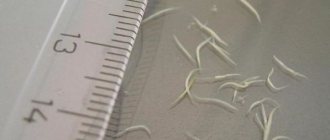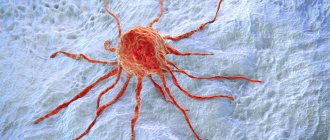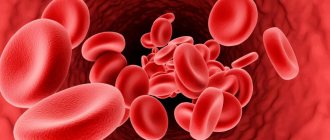Nails are not only a decoration for a person's hands, but, above all, they have a protective function for the fingertips and they also facilitate precise handling. Unfortunately, nails are often affected by numerous diseases.
Nail diseases - types
Many nail diseases are the result of poor nutrition, low in vitamins and minerals. Split nails usually indicate a lack of calcium and zinc.
Their excessive fragility is due to a lack of vitamins of the silicon, magnesium, iron and B group. White spots on the nails should lead to replenishment of calcium deficiency, and longitudinal grooves – deficiency of iron, as well as vitamins A and D.
The nail plate is also weakened by contact with detergents and certain diseases, including diabetes and thyroid disease.
How to keep your nails beautiful and healthy
Here are the general recommendations given by Olga Aleynikova.
Proper nutrition, healthy sleep and exercise should be the default. Regularly inspect your nail plates and take care of your hands.
- Get a manicure and pedicure. Trim or file the free edge of the nails in a timely manner, and treat the cuticle.
- Don't bite your nails.
- Wear gloves when working with chemicals and when digging in garden beds.
- Take vitamins.
- Regularly smear your hands and nails with nourishing cream.
- Don't wear tight shoes, don't stick your fingers in cracks, and be careful with the hammer.
When going to places with large crowds of people, use liquid gloves (this is an emulsion). The risk of contracting infectious diseases through your hands is now very high.
If you see signs of illness on the nail plates, use antifungal agents and regenerating drugs. If the pathology is persistent, be sure to get tested and go to the doctor.
Nail diseases - symptoms
Symptoms of nail disease are visible to the naked eye. Therefore, they should pay special attention to:
- nail color - white, yellow, green, gray, brown can be a symptom of the disease;
- the shape of the nails - scapular, gonadal, tubular - is incompatible with the natural growth of the nail;
- nail structure - longitudinal grooves and transverse grooves should attract attention;
- general condition of nails – brittle, peeling;
- condition of the skin around the nails - redness, swelling, bumps.
The color of ill health
Now let's talk about nail color. For some, they are not soft pink, but yellow. Perhaps it's all due to the usual low-quality varnish. In such a situation, it will be enough to simply abandon it and give your nails a little “rest” from all kinds of coatings.
But if this does not help, there is a possibility that in this case we are talking about pathology of the liver and gallbladder. And in such a situation, of course, it is better to consult a doctor.
Cancer, jaundice, excess cholesterol. What health problems do the eyes reveal? Read more
Nail diseases - treatment
If you notice any symptoms, you should consult a dermatologist. It is necessary to find the cause of the change and exclude serious diseases, such as: thyroid disease, syphilis, anemia, lack of micro and macro elements. Treatment depends on the type and severity of the disease. Some of them are treated with topical medications. In more severe cases, surgery may be required. Therapy is selected individually, taking into account the needs of the patient.
Unfortunately, nail diseases are quite common. Most often, they affect women who use cosmetic procedures in salons where hygienic conditions are not properly maintained.
Laboratory research
- Nail plate screening is a study during which the content of micro- and macroelements is determined. The goal is to see the level of vital substances: iron, potassium, calcium, magnesium, zinc, copper, sodium, selenium and others. And also determine the presence of toxic elements: barium, beryllium and aluminum, cadmium, arsenic, mercury, lead.
- Test for the presence of fungus. A piece of the plate itself and the subungual contents are examined under a microscope.
- Sowing. The material affected by the fungus is placed in a nutrient medium to grow colonies of fungi. In this way, the type of fungi and their resistance to drugs are determined. The process takes three weeks to a month.
The most common nail diseases
Nail candidiasis is a fungal disease of the nails that causes severe blackening, perigungual swelling and pain. Treatment is based on antifungal drugs.
Nail psoriasis occurs in combination with skin psoriasis and is an important part of the diagnosis of this disease. The nails become thickened, brittle, and have numerous transverse grooves and pinpoint cavities. In advanced forms of the disease, extensive onycholysis may develop.
Leukonychia is the so-called nail vitiligo, which appears as white spots. It is not a disease in itself, but can be a symptom of infection, ringworm, zinc and protein deficiencies, and kidney or heart failure.
Onycholysis is the separation of the stratum corneum from the finger. It appears gradually, starting from the edge of the nail. The nail becomes distorted and changes color to white, yellowish and even greenish. The causes of this disease can be mechanical damage, improperly performed care procedures, bacterial and fungal infections, harmful effects of chemicals, psoriasis or thyroid hormone disorders.
You can protect yourself from these diseases by following hygiene rules and choosing sterile beauty salons equipped with professional disinfection equipment.
Tricky enemy
I don’t think anyone needs to explain what nail fungus looks like, but some points still need to be clarified. A fungal infection can really ruin your nails! First, they begin to break and crumble from the free edge, and if you do not consult a doctor or self-medicate (and fungus is an insidious thing, and you cannot cope with it without a specialist), then the infection can affect almost the entire nail and even its matrix, i.e. .root. This can subsequently lead to impaired nail growth.
The most common toenail diseases
Onychomycosis is one of the most common toenail diseases, but it can also appear on the toenails. Fungi, or rather dermatophytes, thrive in the nail environment.
The infection usually occurs when using swimming pools or public showers. Mycosis manifests itself as a color change to yellow, brown or white. There is also deformation of the nail plate and onychlinosis. Treatment requires the administration of appropriate antifungal drugs. If treatment is unsuccessful, surgical removal of the nail may also be necessary.
In prevention, foot hygiene, thorough drying after each wash and cutting nails short are important. You cannot lend shoes, a towel or nail scissors to anyone.
An ingrown toenail is most often found on the largest toenail and is the result of improper care or shoes that are too tight. The cause may also be a nail disease, such as mycosis. Depending on the cause, a treatment method is established.
What is the norm
The nails of a healthy person are smooth, shiny, pale pink in color, with a pronounced whitish hole at the base.
At the same time, the nail plate is constantly renewed, growing by about one millimeter in a week. irecommend.ru
With age, the nail plate thickens and becomes more brittle. This is part of the body's natural aging process. Fragility is also characteristic of the nails of pregnant women. But within six months after giving birth, everything usually returns to normal.
It is acceptable if nails break due to a lack of vitamins or turn yellow due to poor-quality varnish. Sometimes the nail plate can even turn black and fall off if the finger is pinched or hit.
In a healthy person, fingernails are completely restored within 4-6 months, and toenails - within 6-8 months.
But there are persistent pathologies that we often don’t even pay attention to. But in vain. Some changes in the shape, color and texture of nails, as well as the skin around them, may indicate disturbances in the functioning of internal organs and the presence of a variety of, sometimes serious, diseases.
Nail disease in children
Nail diseases in children are most often caused by infections. This leads not only to destruction of the nail plate, but also to the appearance of open wounds.
Warts are caused by HPV that enters the body through mechanical damage. Symptoms include red or grayish nodules. Most often they appear next to the nail, but it happens that the wart can be located under the nail plate. This causes pain and discomfort. Their treatment is very burdensome. Chemicals, laser therapy and eventually surgical methods are used.
Mycosis of the nails in children is also common. This is due to reduced immunity and frequent trips to the pool or sports club. It is necessary to ensure that the child only uses his own towel and always remembers hygiene. Treatment is long and burdensome, so prevention is better than cure.
Section: Articles Tags: dermatology
Overdid it in the gym
Let's start with what healthy nails should look like. Firstly, they are a soft pink shade, even, smooth and shiny; a whitish hole is clearly visible at the cuticle. Secondly, such nails grow well, increasing by about 1 mm per week - this is quite noticeable. Ideally, the nail holes occupy approximately 1/3 of the plate. If they are less or more, this is a bad indicator. In the first option, you probably have a deficiency of vitamin B12 and iron, as well as circulatory problems. In the second, most likely, enlarged sockets are a consequence of excessive physical exertion at work or in the gym, or an indicator of malfunctions of the heart and blood vessels, possible hypotension.
Almost like a spoon
Another nail defect that calls for careful attention to your health is the so-called spoon-shaped nails, or koilonychia. In this case, the nail plate seems to sink down, and the edges are turned outward, and the nail thereby resembles a spoon. There may even be a drop of water “stuck” in it - do this test and find out if you have koilonychia. There are many reasons for this pathology: hormonal imbalances, lack of iron in the body, injuries, exposure to aggressive chemicals, sudden changes in temperature and even genetics.
White
White spots or leukonychia are the most common type of dyschromia; they are usually not dangerous to health and are regarded as a temporary cosmetic defect. At least once in their lives, adults and children had white spots on their nails.
Why are they formed? Essentially, these are air bubbles trapped between the bed and the nail plate. At the site of the bubble, the nail retreats from the vascular skin, and a white spot appears on a pink background.
Leukonychia occurs in the form of dots, transverse stripes or wide spots.
The list of causes that causes it includes:
- Allergy to nail polish, hardener, remover or other manicure products;
- Fungal infection, white superficial onychomycosis. Initially, small white dots are visible, then the infection spreads to the entire plate. Nails peel, thicken, crumble;
- Injuries to the plate or nail matrix. Impacts, pinching, injuries during manicure or pedicure, wearing artificial surfaces;
- Lack of protein, zinc, calcium, iron in the body due to an unbalanced diet or metabolic disorders;
- Tight shoes. This is the reason why white spots appear on the toenails;
- Taking certain antimicrobial medications or treatment with chemotherapy drugs;
- Heavy metal poisoning.
It is not always possible to determine the exact reason why white spots appear on the nails of the fingers or toes. To do this, it is better to contact specialists.
If the stain is only on one finger, then most likely the cause is injury. As the plate grows, it will move to the free edge and leave along with the cut part of it.
If there are a lot of spots, you need to go to the doctor, because it is a matter of systemic disorders. When poisoned or taking medications, leukonychia appears as long light transverse stripes. With onychomycosis, the boundaries of the spots are unclear.
The doctor will examine your fingers and prescribe additional tests. In case of a systemic disorder, the underlying disease is treated. If leukonychia is caused by side effects of medications, the doctor will recommend an alternative. For onychomycosis, the affected area is cleaned, and then fungicidal ointments or creams are applied daily. In case of nutrient deficiency, vitamin and mineral complexes are prescribed.
Onychogryphosis - "bird's claw"
The diagnosis of nails of this shape is made quickly enough. They have the shape of a bird's claw - the plate is strongly curved, very dense, yellow, dirty gray or black. First, doctors rule out burns, frostbite, onychomycosis, and the consequences of wearing tight, uncomfortable shoes. And then they send patients to laboratories for examination for generalized candidiasis - a fungal infection of internal organs. It is extremely rare for the transformation into “bird claws” to occur in elderly people due to the natural aging of the body.
What does the color change mean?
Everyone knows that a smoker's nails are dark yellow. But there are also plates with a completely unnatural shade, alien to the body. And most often it is caused by developed pathology.
Based on the color of the nails, the disease can be diagnosed by a doctor in a couple of minutes:
- green - Pseudomonas aeruginosa infection;
- reddish - chronic leukemia;
- whitish - cirrhosis of the liver;
- bluish with a purple tint - severe diseases of the cardiovascular system;
- yellow - any liver pathology, including fatty degeneration.
It is worth immediately clarifying that the doctor makes a preliminary diagnosis based on a combination of symptoms. Therefore, you should not panic or suspect oncological pathology if you notice a reddish tint. Redness of the skin under the nails may be a fungus, a sign of vitamin deficiency, or a consequence of removing red nail polish.
Flat plates
In medicine, this deformation is called platonychia. In the vast majority of cases, this is a common congenital anomaly, from which only the appearance of the hands is affected. Platonychia may also be associated with the type of professional activity, for example, constant contact with irritating substances.
But doctors are able to predict the presence of the disease by the appearance of the nails:
- psoriasis;
- cirrhosis of the liver;
- autoimmune pathologies, including rheumatoid arthritis.
The fact that the flat shape of the nails is caused precisely by pathology is indicated by the deformation of all plates.








